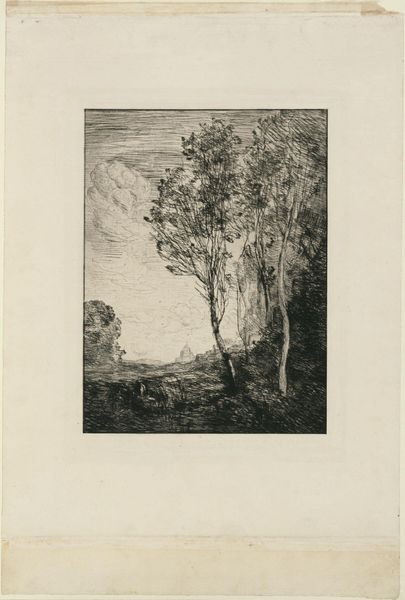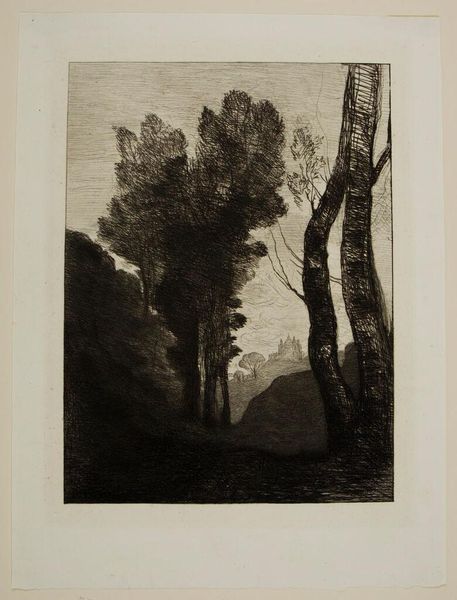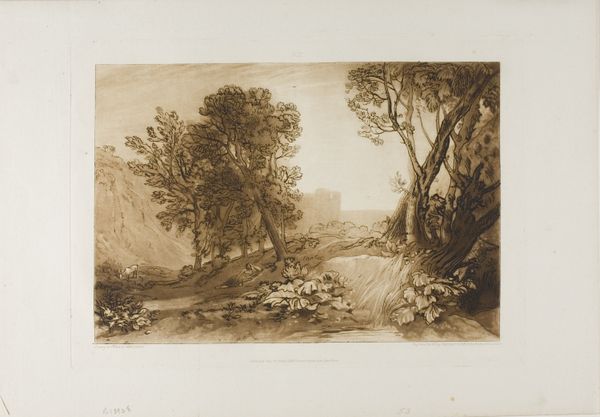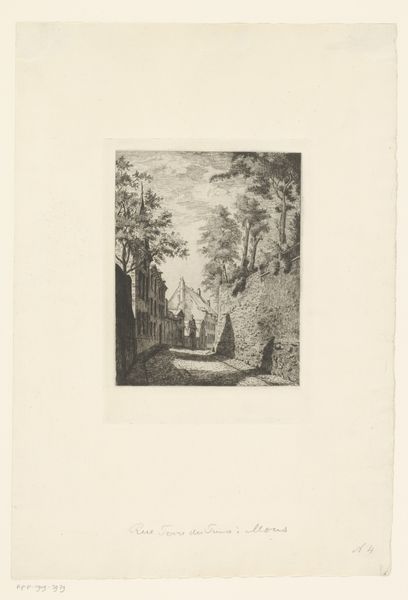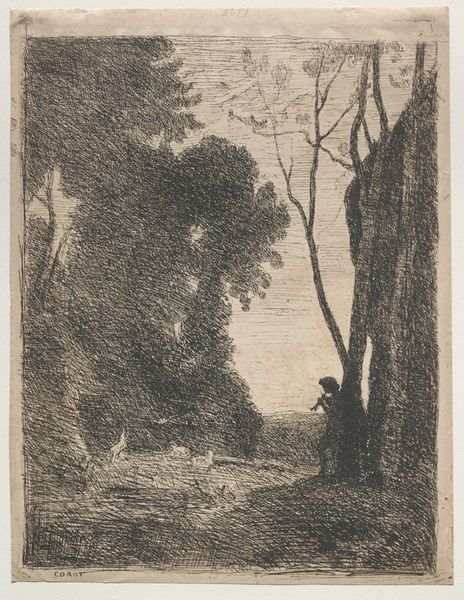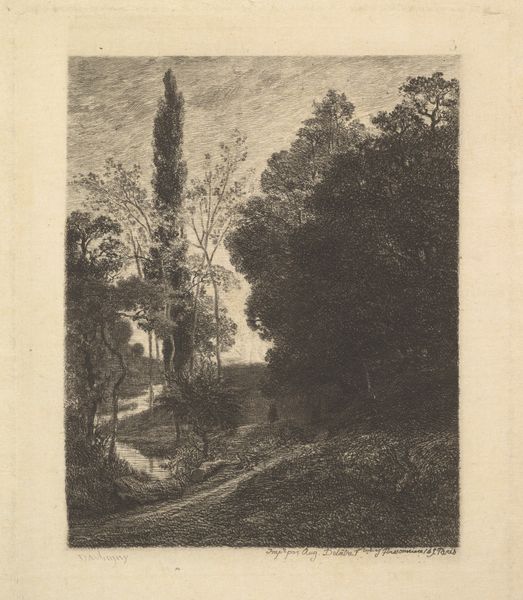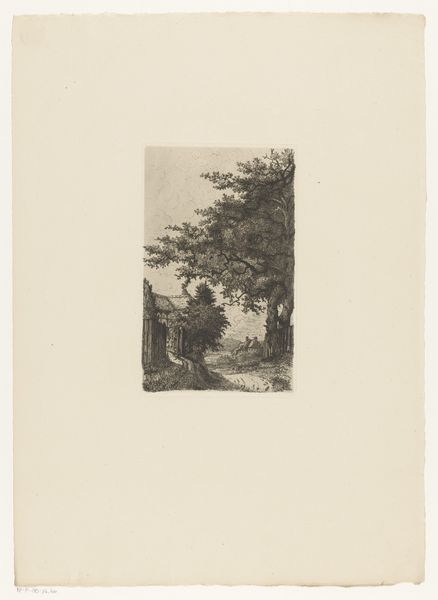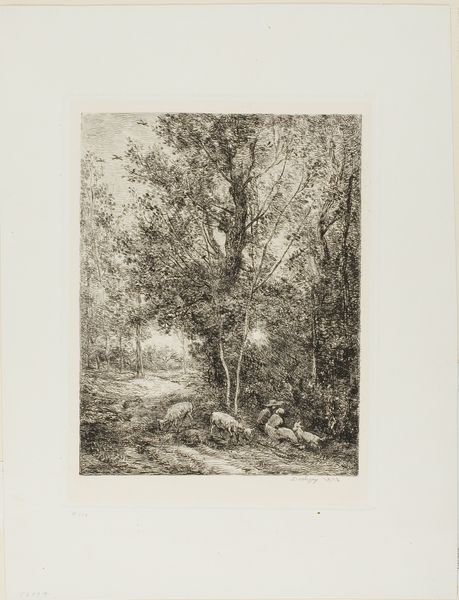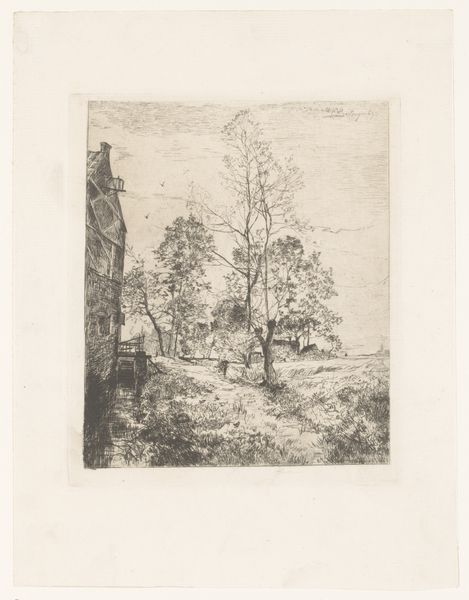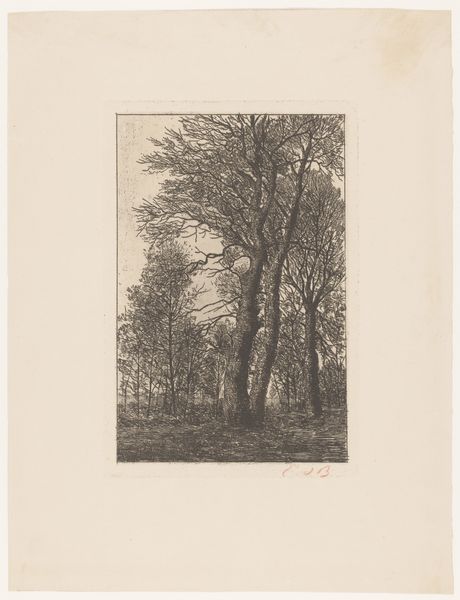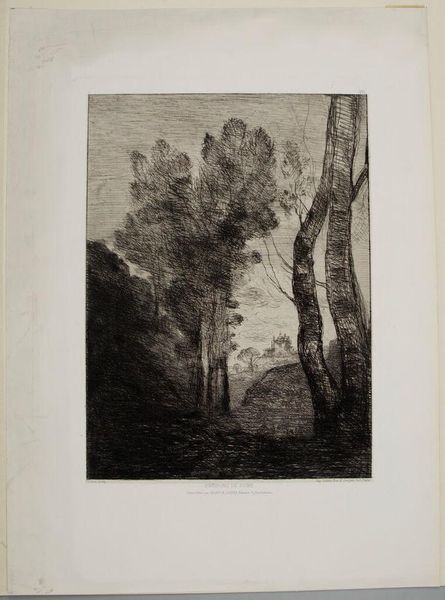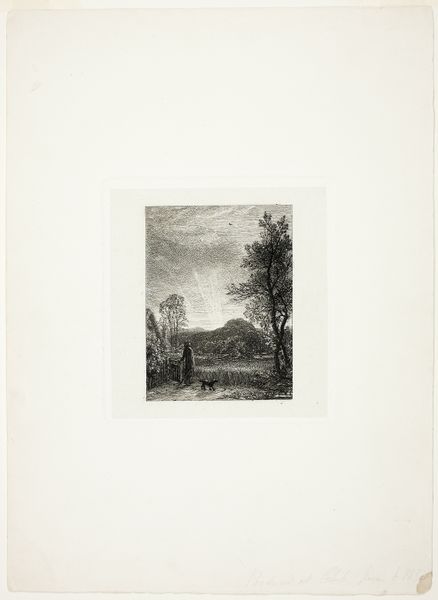
Dimensions: 288 × 210 mm (image); 316 × 235 mm (plate); 433 × 328 mm (sheet)
Copyright: Public Domain
Camille Corot etched "Outskirts of Rome." Note the trees—standing as silent witnesses, they are central motifs across cultures. From ancient myths where trees were divine dwellings to the tree of life in numerous religions, they symbolize growth, connection, and the cycle of life. In classical art, trees often frame scenes, guiding the viewer's eye and adding depth, much like Corot uses them here. The Romantic movement saw trees embodying the sublime power of nature, reflecting human emotions. The lone tree is a symbol found in countless landscapes through time. Think of Caspar David Friedrich, whose works express the melancholy and grandeur of nature. Here, the trees evoke a sense of timelessness, engaging our subconscious with the enduring presence of nature. This is not just a scene; it's an echo of human connection to the natural world. How do these trees resonate with your memories and emotions?
Comments
No comments
Be the first to comment and join the conversation on the ultimate creative platform.
